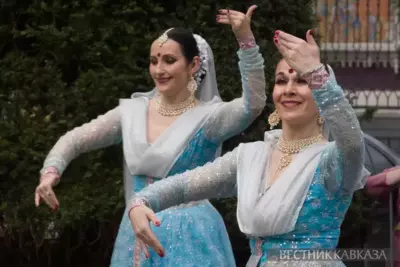The All-Russian Public Opinion Research Center (VCIOM) found out where Russians spent their summer vacations, how much money they spent there, what they expected from their summer and how pleased they are with their vacations. 59% of Russians managed to take a holiday this summer; 36% spent days-off at home; 23% travelled. 41% of citizens didn’t take a vacation (57% of the under-educated population; 50% of people on low incomes; 51% of people living in the countryside). The resorts of Krasnodar Territory have become more popular this year (from 11% to 14%) and Crimea (from 2% to 6%). Outbound tourism was more expensive than last year (by 30%). Moreover, actual budgets significantly exceeded the intended ones. According to the September poll, the average Russian citizen paid 38,516 rubles for a trip (in comparison with 29,731 rubles in 2014).
Alexey Firsov, the VCIOM Director for Communications, speaks about obstacles in the way of developing internal tourism.
First of all, there is an absence of brands. “We are facing the problem of incompatibility of Russian service with the service that is offered abroad, with some exceptions. But service seems to be the case of owners or shareholders of companies of tourism infrastructure and so on, but there are things which largely depend on the policy of the state and heads of regions. For example, we have very poorly developed regional brands. For many people in the country, many regions are just some completely lost white spots. I mean huge Siberia, the Far East and so on. And the policy for the development of sustainable regional brands, all of this is formed spontaneously, unexpectedly. Someone finds out about something, and the information is transmitted further.”
Secondly, the work on tourism clusters is carried out pretty poorly. “We have some tourist facilities, but the cluster approach, where there is a combination of a number of businesses and infrastructure tasks around some tourism object, is also lacking direction.”
Thirdly, there is navigation. “Tourism navigation, even in the most hyped regions such as Crimea, is very weak. That is, people know several points where there is some kind of attraction, they are formed historically, but it has been accumulating for many years. But to say that some kind of unified, comfortable, modern navigation was maintained by the regions, even touristically active, we do not have it. Therefore, in some places we have blockages, when a lot of the population go to some specific place, while others look completely empty.”
Fourthly, there is transportation. “The regions of the Far East communicate with each other via Moscow, then it is easier to fly fro Sakhalin to Moscow, and from Moscow to Khabarovsk. But if a man is already in Moscow, he will not return to the neighboring region for domestic tourism. The Western direction is open in front of him, the southern one, etc. And relatively speaking, underdevelopment of domestic transportations and routes between various centers, absolutely colossal centering of all routes around Moscow, it leads to the fact that domestic tourism is not stimulated. Macro-economic or political factors stimulate domestic tourism, contribute to the development of domestic tourism, but without a deliberate policy in this direction, of course, the process will not go forward by itself.”






